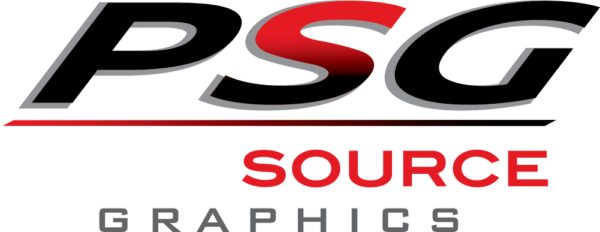- Print Marketing
Marketing Items
Marketing Items
- Labels
- Signs & Large Format
- Custom Apparel
Active Wear
Printing Options
- Promotional Products
- Blog
Printing Trends to Watch in 2023 and Beyond
As technology continues to advance, the printing industry is witnessing remarkable transformations. From innovative printing methods to sustainability-driven practices, the printing landscape is evolving rapidly. In this blog, we will explore some of the most promising printing trends to watch in 2023 and beyond.
DTF Printing: The Game-Changer
Direct-to-Film (DTF) printing is taking the industry by storm. Offering vibrant colors, exceptional detail, and excellent durability, DTF printing is quickly becoming the preferred choice for custom apparel and textile printing. With its ability to print on a wide range of fabrics, including cotton, polyester, and blends, DTF is enabling designers and entrepreneurs to create unique and eye-catching designs.
Sustainable Printing Practices
Environmental consciousness is gaining momentum, and the printing industry is embracing sustainable practices. In 2023, we expect to see a continued emphasis on eco-friendly materials, inks, and production processes. Printing companies are opting for recyclable and biodegradable materials to reduce their carbon footprint. Additionally, more businesses are adopting green initiatives to attract environmentally-conscious customers.
3D Printing:
Beyond Prototyping While 3D printing has been around for some time, it is now moving beyond prototyping to full-scale production. In 2023, 3D printing is set to revolutionize various industries, from manufacturing and healthcare to aerospace and automotive. With advancements in material science and printing technology, we can expect 3D printing to deliver complex and functional end-use products like never before.
Personalized Printing Solutions
In the age of personalization, consumers are seeking unique and tailored experiences. Printing companies are responding by offering personalized printing solutions across various products, including apparel, home décor, and promotional items. Whether it’s individual names, custom designs, or localized versions, the demand for personalization is driving significant changes in the printing industry.
Hybrid Printing Technologies
Hybrid printing combines the strengths of different printing methods to achieve superior results. For instance, hybrid UV-LED printers that integrate UV and LED curing technologies provide faster production speeds and enhanced color gamut. As print providers seek versatility and efficiency, hybrid printing is likely to gain more prominence in 2023 and beyond.
Digital Packaging Printing
The packaging industry is embracing digital printing to meet the growing demand for short-run, high-quality packaging solutions. Digital packaging printing offers flexibility, cost-effectiveness, and the ability to incorporate variable data, making it an ideal choice for small and medium-sized businesses. As e-commerce continues to thrive, digital packaging printing will remain a key trend.
Blockchain in Printing Supply Chain
Blockchain technology is making its way into the printing supply chain to ensure transparency and security. By utilizing blockchain, printing companies can track the entire lifecycle of a printed product, from design and production to distribution and disposal. This level of traceability enhances trust and reduces the risk of counterfeiting.
Augmented Reality (AR) in Printed Materials
Augmented reality is transforming the way we interact with printed materials. By incorporating AR elements into brochures, catalogs, and packaging, printing companies can provide engaging and interactive experiences for their customers. This trend is expected to gain momentum as AR technology becomes more accessible and user-friendly.
Conclusion:
The printing industry is undergoing a transformative journey with technological advancements, sustainability initiatives, and customer centric innovations. The trends discussed in this blog demonstrate the diverse and exciting opportunities unfolding in the printing landscape.
As we look beyond 2023, it is clear that the printing industry will continue to evolve and adapt to emerging technologies and market demands. The integration of DTF printing, sustainable practices, and hybrid technologies will drive efficiency and quality in printing processes. Furthermore, the adoption of cloud-based solutions, IoT, and AI will enhance automation, connectivity, and data-driven decision-making.
Personalization and customization will remain key drivers, enabling businesses to deliver unique and tailored experiences to their customers. From variable data printing to print-on-demand services, the printing industry will continue to cater to the growing demand for personalized content.
Moreover, the intersection of printing with other technologies such as AR, blockchain, and nanography will unlock new creative possibilities and enhance security measures. Brands will leverage these innovations to captivate their audiences and protect their intellectual property.
Sustainability will remain a crucial focus, with the industry embracing eco-friendly inks, materials, and practices. By reducing waste, optimizing resources, and adopting circular economy principles, printing companies will contribute to a greener and more sustainable future.
As the digital era progresses, the printing industry will undergo digital transformation, leveraging web-to-print platforms, digital storefronts, and advanced analytics to streamline operations and provide seamless customer experiences.
In conclusion, the printing industry is at an exciting crossroads, poised to embrace new technologies, sustainable practices, and customer-centric approaches. By keeping a close eye on these trends and proactively adapting to change, printing businesses can stay ahead of the curve and unlock new opportunities for growth and success in 2023 and beyond.
Facebook
Twitter
LinkedIn
Pinterest





